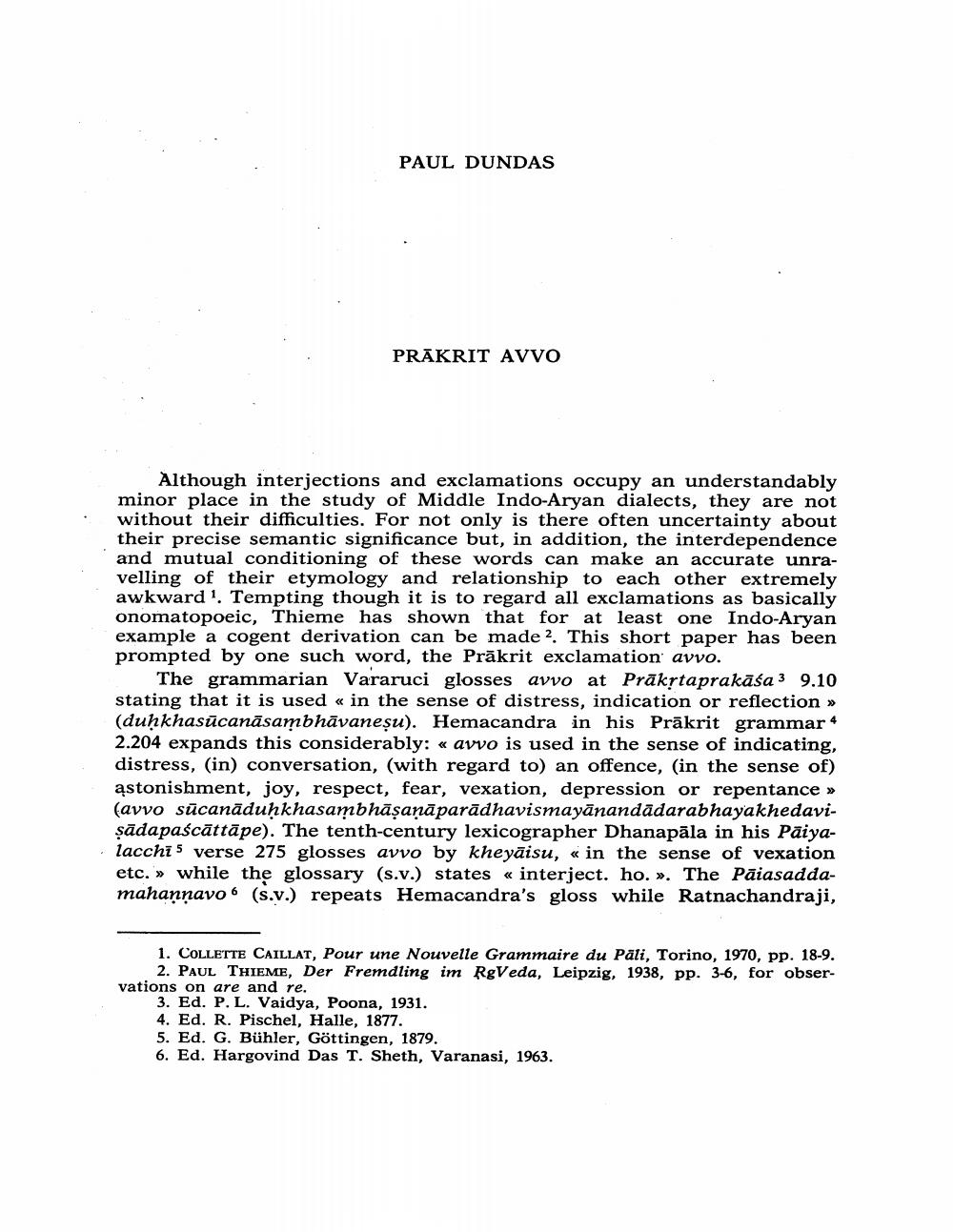________________
PAUL DUNDAS
PRAKRIT AVVO
Although interjections and exclamations occupy an understandably minor place in the study of Middle Indo-Aryan dialects, they are not without their difficulties. For not only is there often uncertainty about their precise semantic significance but, in addition, the interdependence and mutual conditioning of these words can make an accurate unravelling of their etymology and relationship to each other extremely awkward'. Tempting though it is to regard all exclamations as basically onomatopoeic, Thieme has shown that for at least one Indo-Aryan example a cogent derivation can be made 2. This short paper has been prompted by one such word, the Prakrit exclamation avvo.
The grammarian Vararuci glosses avvo at Präkṛtaprakāśa3 9.10 stating that it is used << in the sense of distress, indication or reflection >> (duḥkhasücanäsambhavaneșu). Hemacandra in his Prakrit grammar 2.204 expands this considerably: « avvo is used in the sense of indicating, distress, (in) conversation, (with regard to) an offence, (in the sense of) astonishment, joy, respect, fear, vexation, depression or repentance » (avvo sūcanāduḥkhasambhāṣaṇāparādhavismayānandādarabhayakhedavişadapaścättäpe). The tenth-century lexicographer Dhanapala in his Paiyalacchi 5 verse 275 glosses avvo by kheyaisu, « in the sense of vexation etc. » while the glossary (s.v.) states «< interject. ho. ». The Paiasaddamahannavo (s.v.) repeats Hemacandra's gloss while Ratnachandraji,
1. COLLETTE CAILLAT, Pour une Nouvelle Grammaire du Päli, Torino, 1970, pp. 18-9. 2. PAUL THIEME, Der Fremdling im RgVeda, Leipzig, 1938, pp. 3-6, for observations on are and re.
3. Ed. P. L. Vaidya, Poona, 1931.
4. Ed. R. Pischel, Halle, 1877.
5. Ed. G. Bühler, Göttingen, 1879.
6. Ed. Hargovind Das T. Sheth, Varanasi, 1963.




